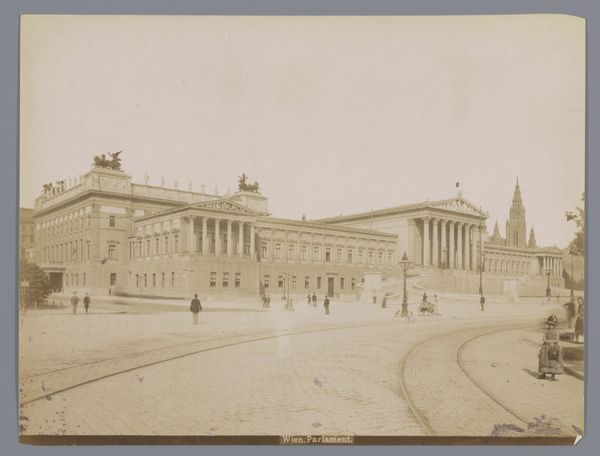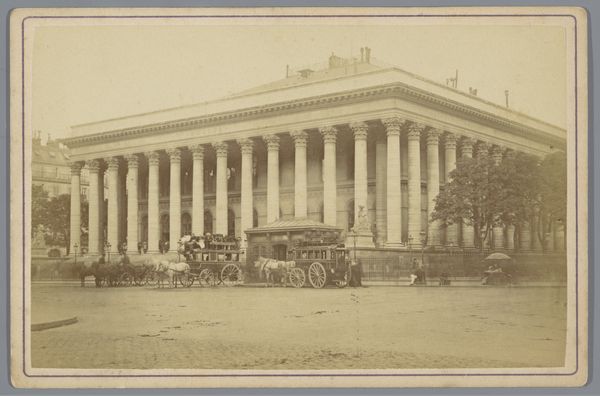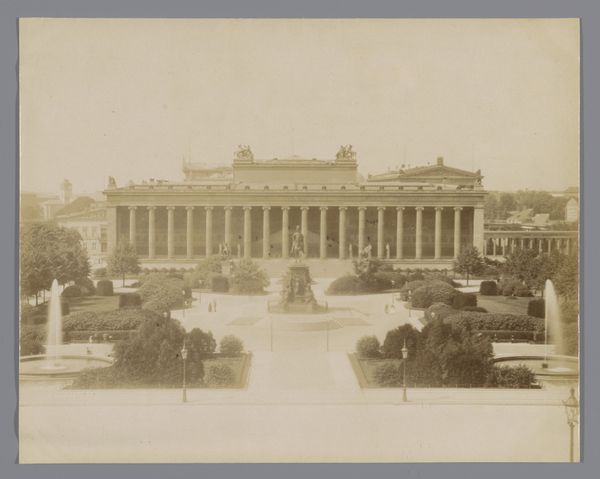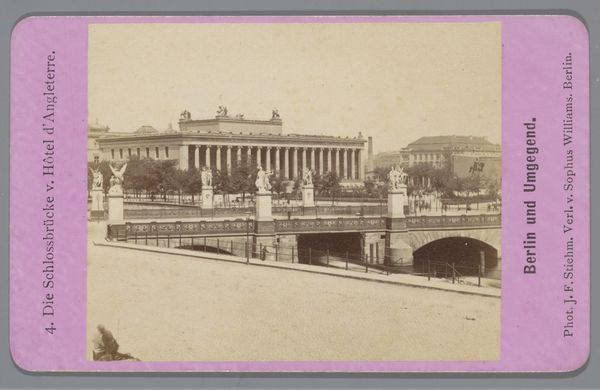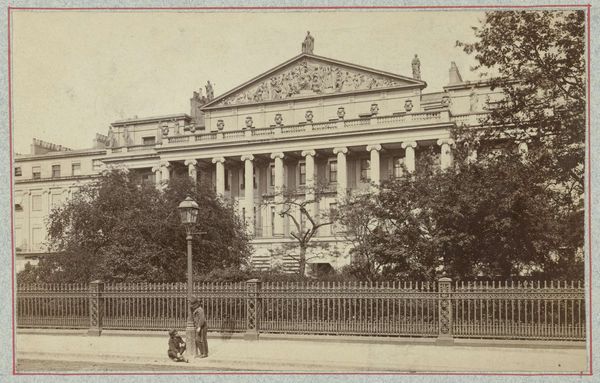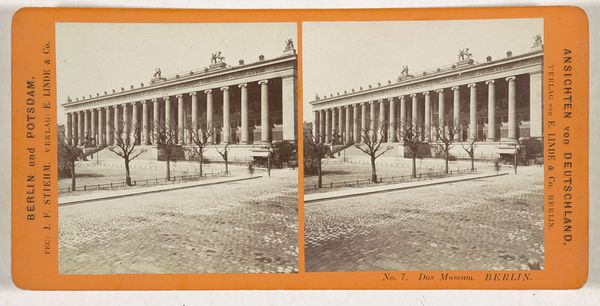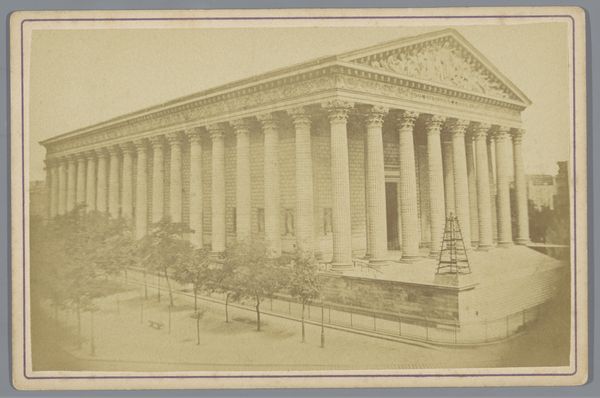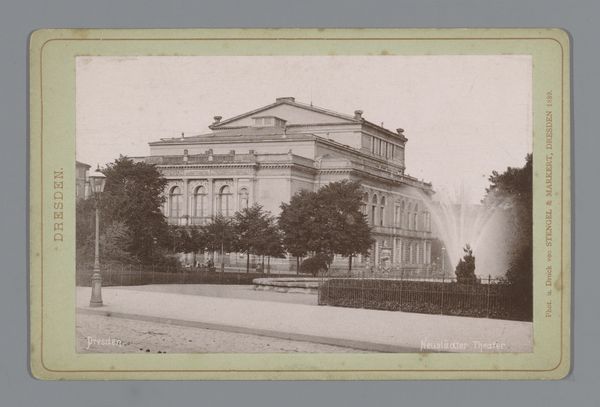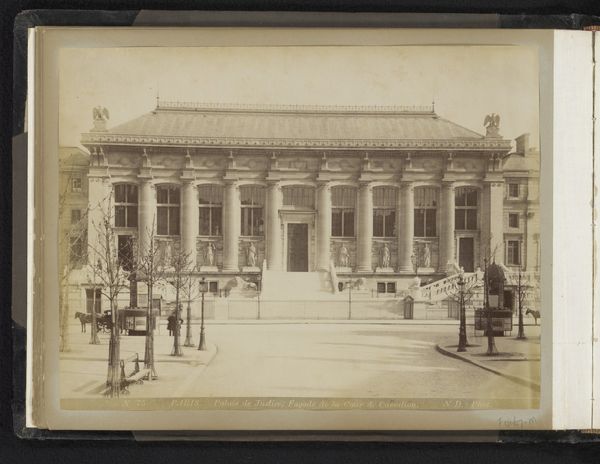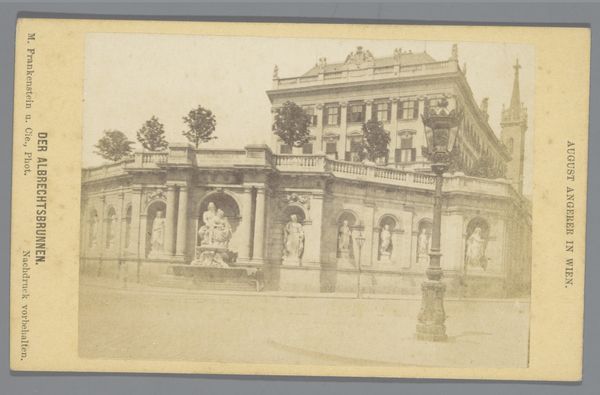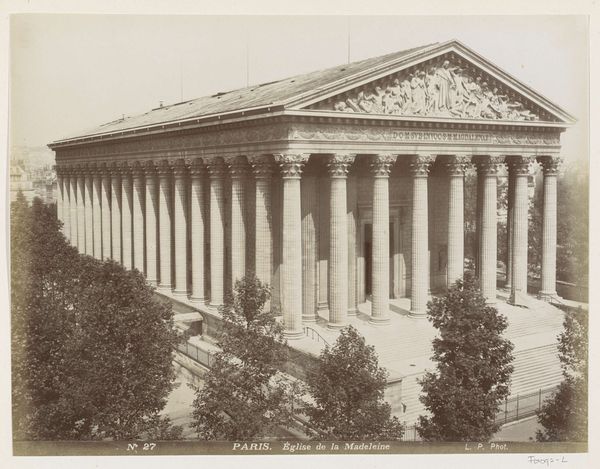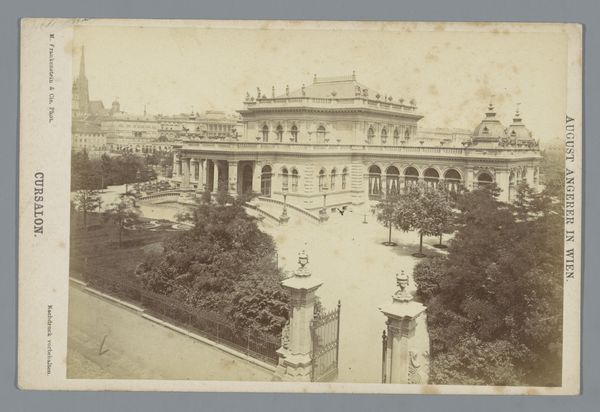
print, photography, albumen-print, architecture
#
portrait
#
neoclassicism
# print
#
photography
#
cityscape
#
albumen-print
#
architecture
Dimensions: height 65 mm, width 107 mm
Copyright: Rijks Museum: Open Domain
This albumen print by Johann Friedrich Stiehm shows the Altes Museum in Berlin. Photography in the 19th century was a chemical and industrial process. Each print involved coating paper with light-sensitive emulsion, exposing it to a negative, and then developing and fixing the image. Albumen prints, like this one, were particularly popular due to their clarity and detail. They were made using egg whites to bind the silver salts to the paper. This labor-intensive process required specialized knowledge and equipment, contrasting with the seemingly effortless capture of a moment. Consider the social context. Photography democratized image-making, making views of architecture accessible to a wider audience. Yet, it also created a new industry, with photographers like Stiehm both artists and entrepreneurs. By examining the materials and processes of photography, we gain a deeper understanding of its role in shaping our perception of the world, blurring the lines between art, craft, and industry.
Comments
No comments
Be the first to comment and join the conversation on the ultimate creative platform.
